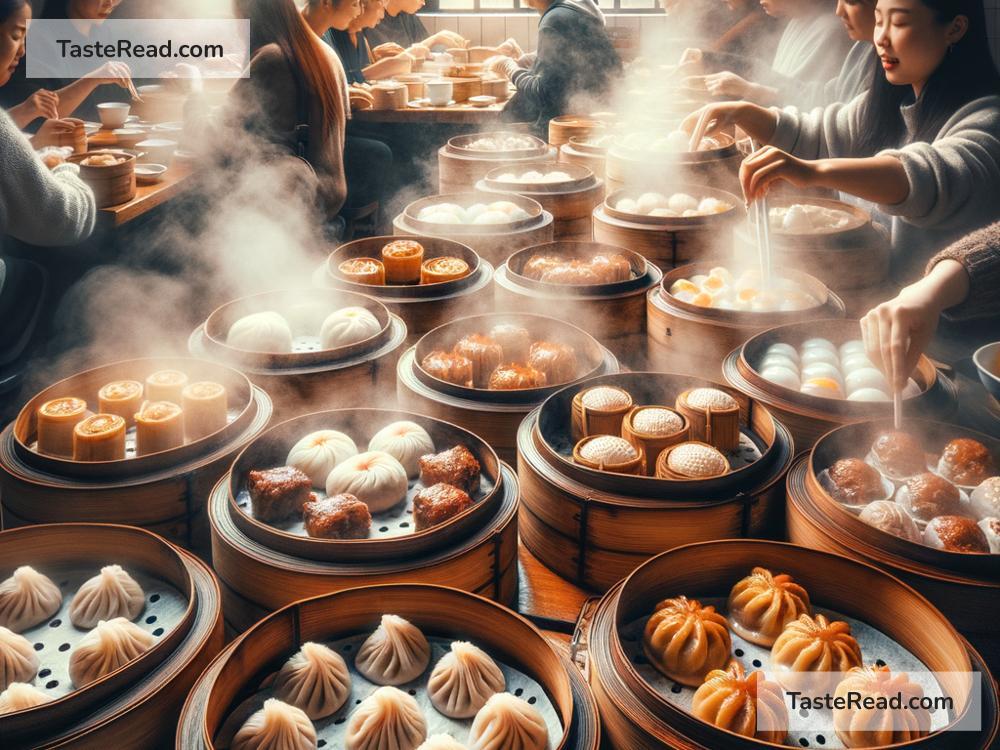Tapping into the Magic of Dim Sum: A Chinese Culinary Adventure
Dim Sum, a term that stimulates the appetite of food enthusiasts and evokes images of a feast composed of an array of small, delectable dishes, has a narrative soaked in tradition, culture, and communal joy. The Chinese tradition of Dim Sum is not just about food; it’s a cultural experience that tells a story of ancient practices, social connection, and culinary innovation. Let’s dive into this fascinating world and uncover the story behind Dim Sum.
The Origins and Evolution
The history of Dim Sum is intertwined with the tradition of “Yum Cha” – which simply means “drink tea” in Cantonese. This tradition began in the tea houses of Southern China, particularly the bustling region of Guangdong and its capital, Guangzhou. Here, weary travelers along the ancient Silk Road and local farmers would often stop to rest and refresh themselves with a pot of tea. Over time, these tea houses began serving small bite-sized dishes to complement the tea, marking the birth of Dim Sum.
The practice of Dim Sum evolved during the Tang Dynasty (618-907 AD) when it became closely associated with the concept of “Yum Cha.” However, it wasn’t until later, during the Qing Dynasty (1644-1911), that Dim Sum as we know it today truly flourished. The culinary landscape of China saw a significant transformation as chefs competed to create and serve innovative and delectable bite-sized treats to attract visitors to their tea houses.
An Array of Delights
The beauty of Dim Sum lies in its variety. The term Dim Sum itself translates to “touch the heart,” indicating how these small treats are meant to delight and not necessarily satiate hunger. From steamed buns filled with barbecue pork (Char Siu Bao) to delicate shrimp dumplings (Har Gow), and from spring rolls to sticky rice wrapped in lotus leaves (Lo Mai Gai), the variety is endless. Each dish is a meticulous blend of flavors, textures, and colors, showcasing the artistry and finesse of Chinese culinary traditions.
A Social Affair
More than just a meal, Dim Sum holds a significant place in Chinese culture as a social affair. Traditionally, families and friends gather around a lazy Susan loaded with a vibrant selection of Dim Sum dishes in the late mornings through early afternoon. This is a time for banter, bonding, and the shared joy of sampling different flavors together. The act of sharing food from the same plates fosters a sense of community and togetherness, making Dim Sum a deeply communal experience.
Modern Innovations
While deeply rooted in tradition, the world of Dim Sum is not immune to change and innovation. Chefs around the globe have experimented with the classic recipes, introducing contemporary twists that cater to modern palates. Fusion Dim Sum dishes that incorporate elements from different cuisines have emerged, surprising and delighting diners with new tastes and textures. Vegan and vegetarian versions of traditional Dim Sum have also become increasingly popular, ensuring that the joy of Dim Sum can be shared by all, regardless of dietary preferences.
The Art of Yum Cha Today
Today, the tradition of Yum Cha and enjoying Dim Sum has spread far beyond the borders of China, finding a home in countries all around the world. From bustling Chinatowns in major cities to exclusive dining establishments, Dim Sum has truly become a global phenomenon. Yet, at its core, it remains a celebration of Chinese culinary heritage, a testament to the power of food in bringing people together.
Final Thoughts
Dim Sum offers a window into the rich tapestry of Chinese culture, history, and communal spirit. It’s a journey of taste that goes beyond mere consumption to encompass traditions that have been passed down through generations. Whether you’re savoring the classic Har Gow in a traditional tea house or experimenting with a modern fusion dish in a contemporary eatery, the spirit of Dim Sum invites you to pause, connect, and cherish the modest yet profound joy of sharing a meal. This is the magic of Dim Sum – a culinary adventure that touches the heart in more ways than one.


